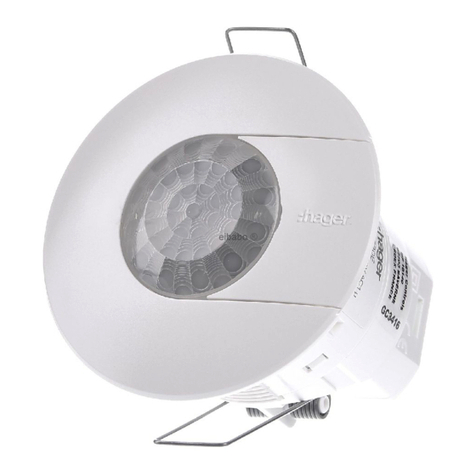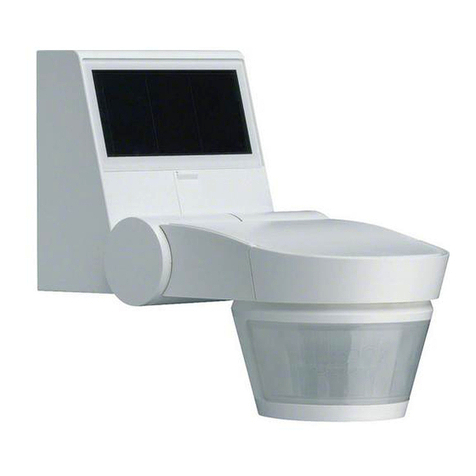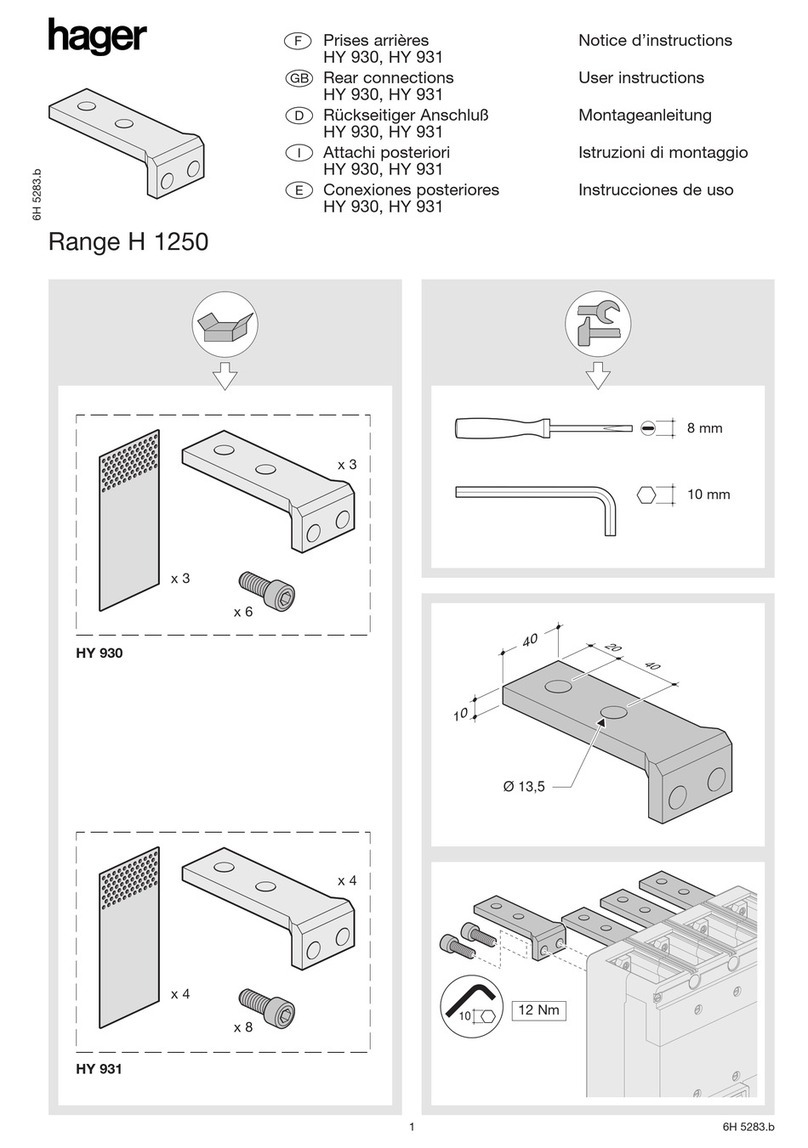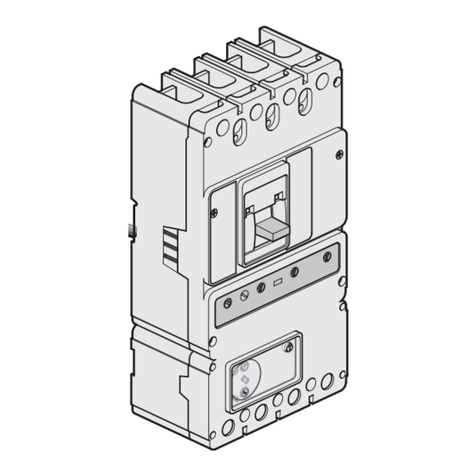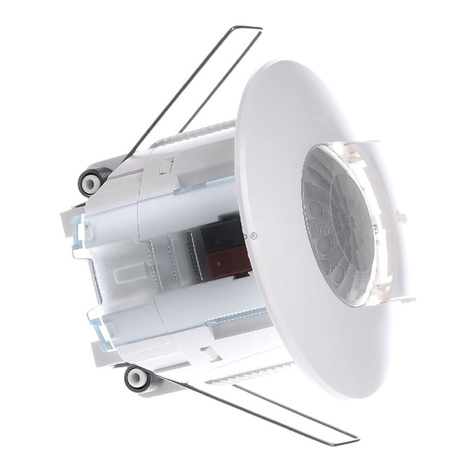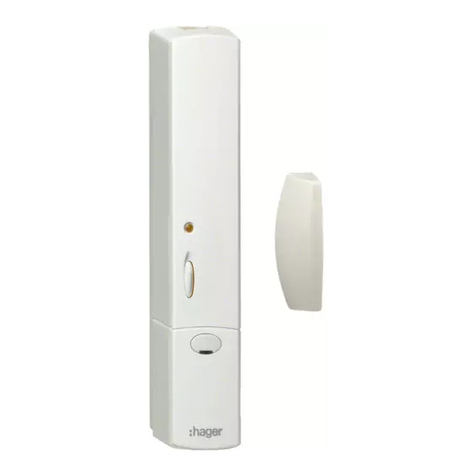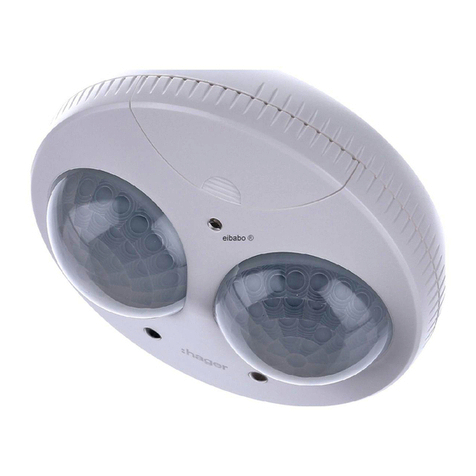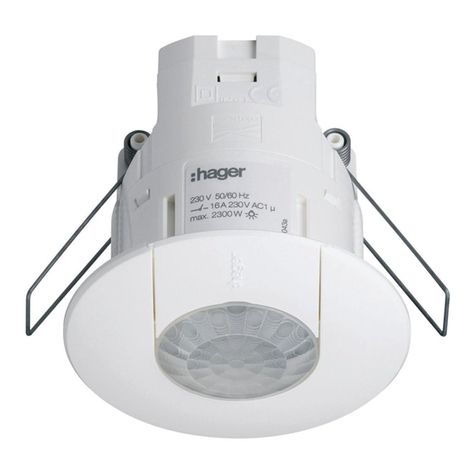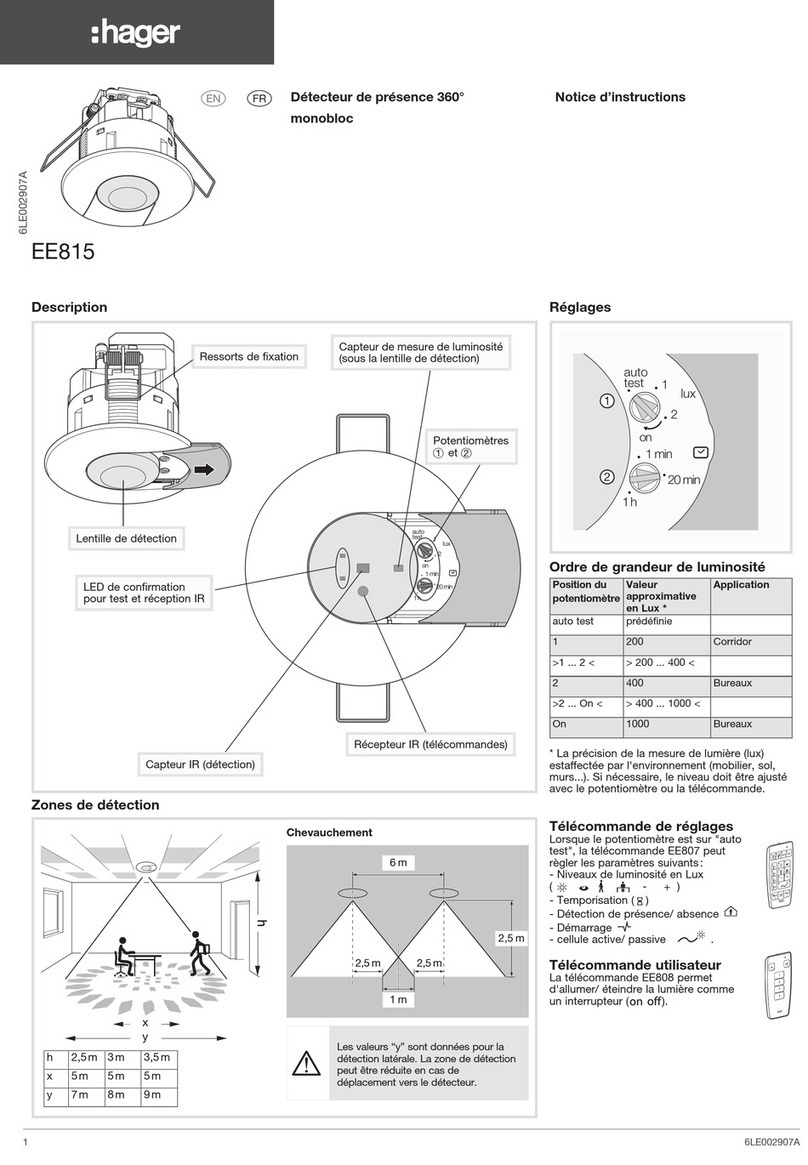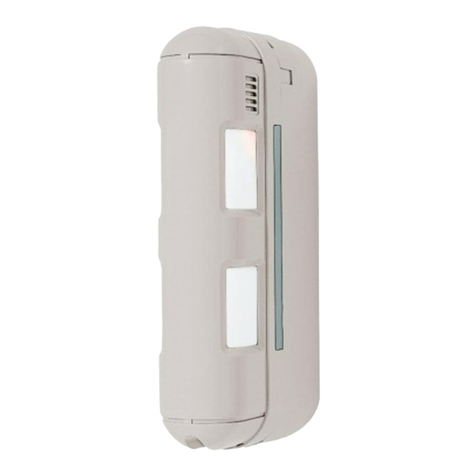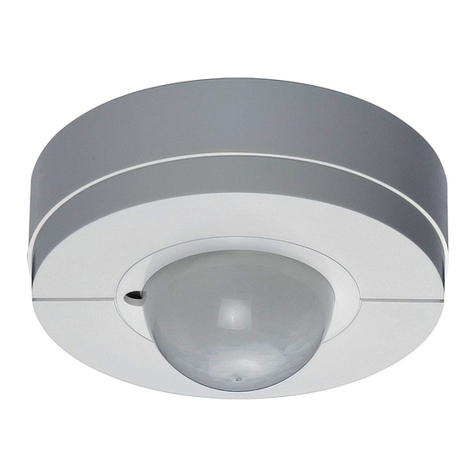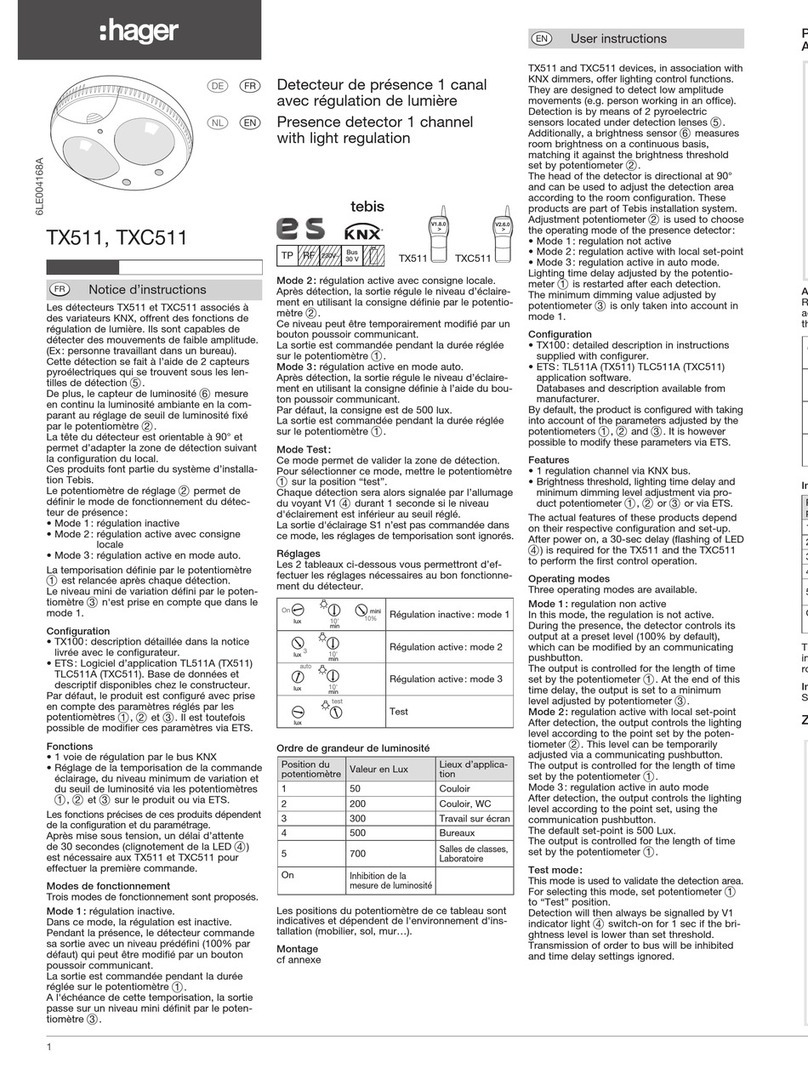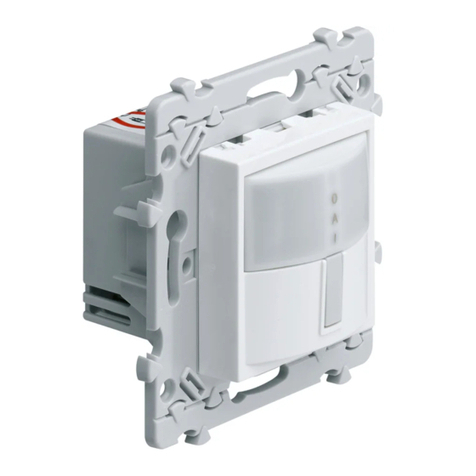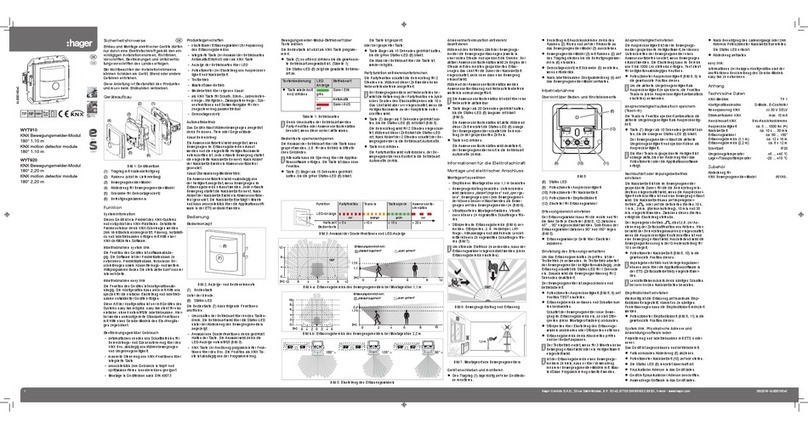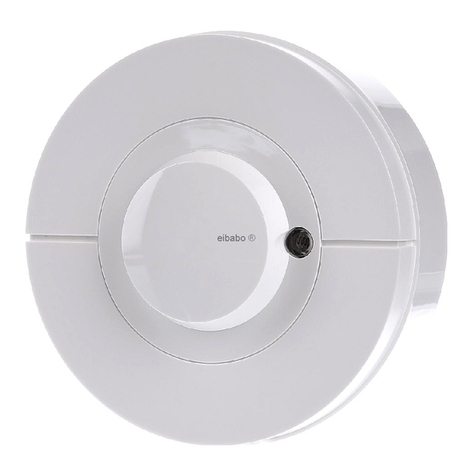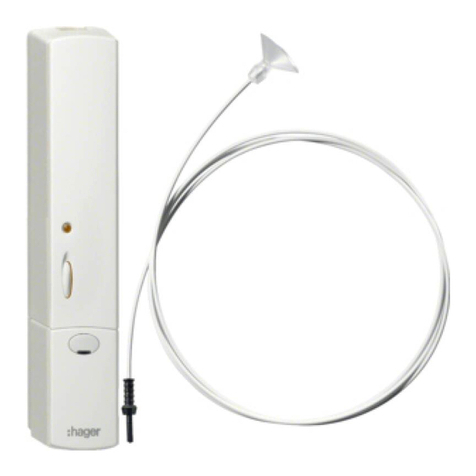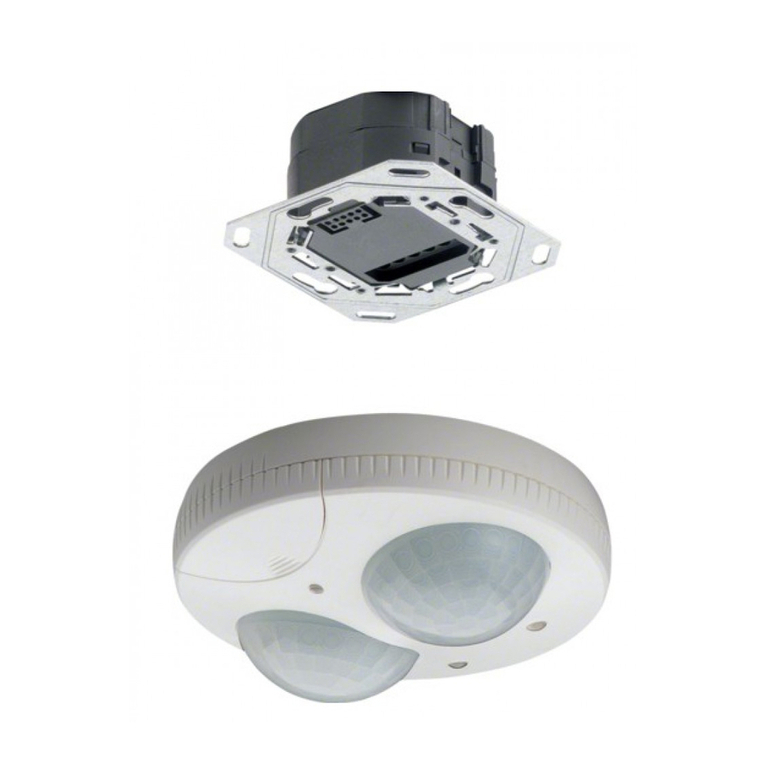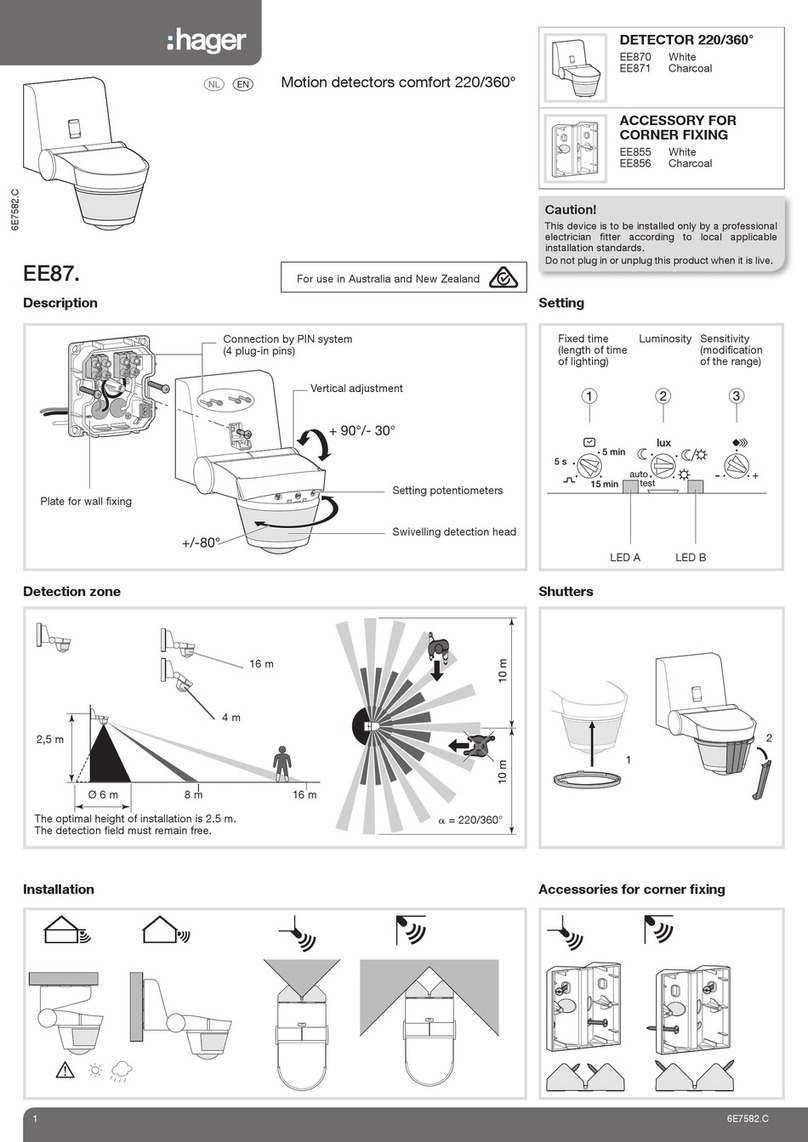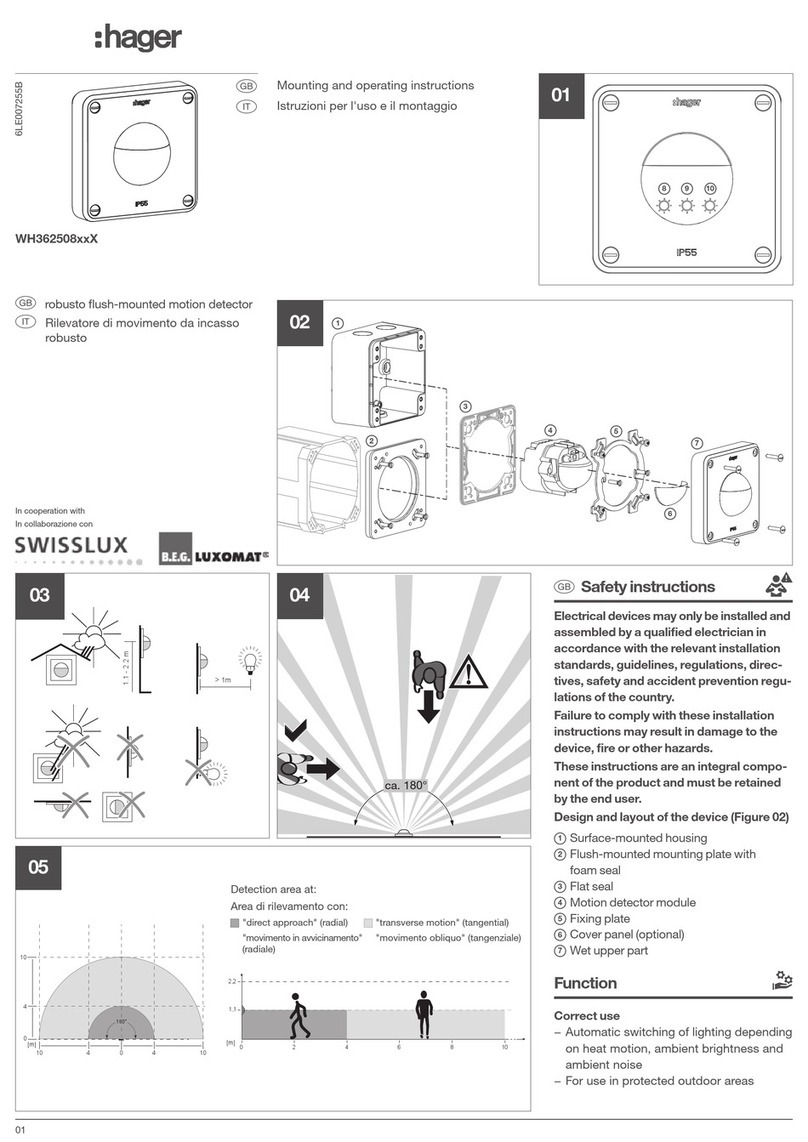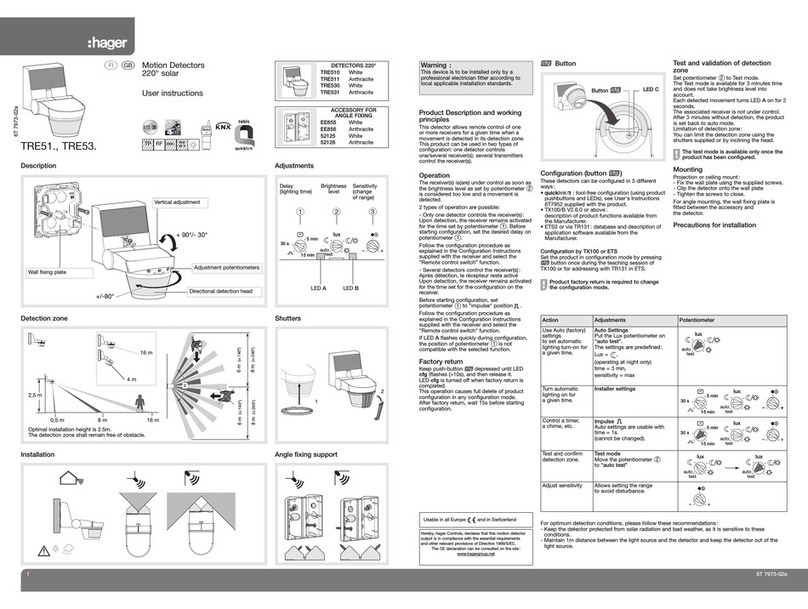
Auswahl der Eingänge
• Eingang 0: Öffnungsmeldung – Statusanzeige
(nicht verfügbar in quicklink&)
• Eingang 1:Kontakt Schalterfunktion.
Im Konfigurationsmodus erfolgt die Auswahl
der Eingänge durch kurzen Druck auf Taste A
für Eingang 0 und einen langen Druck
(> 5 Sekunden) für Eingang 1.
GUm den Konfigurationsmodus zu ändern,
ist das Gerät obligatorisch auf
"Werkseinstellungen" zuruckzusetzen.
Meldungen der Kontrollleuchte A
Ausgelagerter Kontakt
Um die Kapazitäten des Melders zu erhöhen, lässt
sich ein ausgelagerter Kontakt (spannungsfreier
Kontakt, es darf keine Spannung an den
verkabelten Eingängen anliegen) anschließen.
Die beiden Kontakte (Fenster + ausgelagerter
Kontakt) werden dann als logisches „ODER”
behandelt. Um den Meldebetrieb des
ausgelagerten Kontakts zu aktivieren, ist das
Fenster mindestens einmal zu betätigen.
Um einen bereits aktivierten ausgelagerten Kontakt
zu entfernen, muss das erät zurückgesetzt
werden. Dazu für 30 s die Batterien entnehmen.
Zurücksetzen auf Werkseinstellungen
Taster Rdrücken und gedrückt halten, bis die
LED cfg blinkt (>10 Sekunden), dann loslassen.
Das Zurücksetzen auf Werkseinstellungen wird
durch das Erlöschen der LED cfg angezeigt.
Bei dieser Aktion wird die komplette Konfiguration
des erätes gelöscht. Nach dem Rucksetzen auf
Werkseinstellungen ist eine Wartezeit von
15 Sekunden abzuwarten, bevor die Konfiguration
vorgenommen werden kann.
Zubehör
D8924 Öffnungskontakt, Aufputzgerät mit
Klemmleiste, verdrahtet
D8931 Universal-Öffnungskontakt, geschützt,
weiß, verdrahtet
D8932 Universal-Öffnungskontakt, geschützt,
braun, verdrahtet
Zubehör nicht in allen Ländern erhältlich. Die
Möglichkeit zum Einsatz zusätzlicher spannungs-
freier Magnetkontakte ist nicht gewährleistet.
4 6T7992B
www.hager.com
°
£
Produktbeschreibung
Der Öffnungsmelder TRC301B ist ein
batteriebetriebener KNX-Funksender. Er dient
dazu, dem Bus die Öffnung eines Fensters oder
einer Tür zu melden.
Diese Information kann ebenfalls dazu dienen,
einen KNX-Steuerbefehl anzustoßen:
Frostschutzbetrieb der Heizung, Aufwärts-
bewegung des Rollladens, Szene usw.
Der Melder ist folgendermaßen ausgestattet:
• mit einem integrierten Magnetkontakt
• mit einer Anschlussleiste zum Anschluss
eines ausgelagerten Kontakts.
Betrieb
Der TRC301B hat einen Automatikmodus, mit dem
KNX-Meldungen zu jeder Zustandsänderung des
Kontakts gesendet werden können. Je nach
bewerkstelligter Konfiguration werden eine oder
mehrere Informationen gesendet.
Der Automatikmodus kann unterbrochen werden
(z. B. um ein Fenster zu öffnen, ohne die Heizung
abzustellen). Dazu die Taste Abetätigen. Die
Kontrollleuchte leuchtet 1 Sekunde lang rot. Um
den Öffnungsmelder wieder in den
Automatikmodus zu schalten, erneut die Taste A
betätigen. Die Kontrollleuchte leuchtet 1 Sekunde
lang grün.
Die genauen Funktionen dieser eräte hängen von
der jeweiligen Konfiguration und den jeweiligen
Parametereinstellungen ab.
Öffnen
1Schraube mit Hilfe eines Kreuzschlitz-
Schraubenziehers lösen
2ehäusedeckel vom Sockel ablösen
32 Alkalizellen einlegen, Typ AAA LR03
Das Auswechseln der Batterien hat keinerlei
Auswirkungen auf die erätekonfiguration.
Montage
Wahl des Einbauortes
Der Melder ist folgendermaßen zu platzieren:
• im Innenbereich
• vorzugsweise an der Zarge des Fensterflügels,
mindestens 1 m über dem Boden
• in ausreichend Abstand von Störsignalquellen
aller Art (Strom-zähler, metallene Masse usw.)
• auf einer ebenen Fläche.
GBei Montage auf Metalluntergrund ist ein Holz-
oder Kunststoffkeil, Stärke 20 mm, zwischen
Sockel und Metallrahmen zu platzieren.
Befestigung des Melders
Sockel mit 2 geeigneten Schrauben oder
mit Doppelklebeband am Untergrund befestigen.
Bei Verwendung eines ausgelagerten Kontakts
einen passenden Kabeldurchführungsanschluss
für Ihren Kabelquerschnitt wählen.
Bündelung von
Kabeldurchführungen :
B
A4 Montagemöglichkeiten :
Montage des Magnethalters
Wenn das Fenster geschlossen ist, ist der
Magnethalter gegenüber dem eingebauten
Öffnungskontakt, in weniger als 5 mm Abstand von
diesem, zu platzieren.
Richten Sie die vertikale Einkerbung des
Magnethalters auf den Pfeil am Sockel des
Melders aus.
GDie seitliche Ausrichtung und die genaue
Höhenabstimmung sind für den einwandfreien
Betrieb des Melders unerlässlich.
Nach Bedarf sind die zusätzlich mitgelieferten
Unterlegkeile für den Magnethalter zu verwenden,
oder es ist ein Keil unter dem Öffnungsmelder zu
platzieren (nicht im Lieferumfang enthalten).
Sockel des Magnethalters montieren, Magneten in
die Abdeckung einlegen und diese auf den Sockel
aufstecken. Melder aufstecken und am Sockel
verschrauben 2.
Schraubenabdeckungen auf
der Abdeckung montieren (an
der Magnethalterung
mitgeliefert).
Um die Abdeckung des
Magnethalters zu lösen, führen
Sie einen kleinen flachen
Schraubenzieher in die hierfür
vorgesehene Einkerbung
stecken und drehen.
Montage und Anschluss der ausgelagerten
Kontakte
Siehe Zeichnungen und .
GWenn die Kontakte D8931 und D8932
verwendet werden, dürfen nur der blaue und
der grüne Draht angeschlossen werden.
Zusammenfassung der Öffnungs- und
chließabstände
Öffnungs- und Schließabstände zwischen dem
Mehrkontaktmelder und dem Magneten, von
welchem aus der eingebaute Kontakt die
Zustandsänderung des Ausgangs analysiert.
(beigefügte Tabelle ).
Konfiguration
Dieser Sender lässt sich auf 3 unterschiedliche
Arten konfigurieren:
•quicklink&-Konfiguration ohne Werkzeug, siehe
die mit den Funkempfängern gelieferte Anleitung.
• E-mode-Konfiguration via TX100/B V.2.7.0
oder >: Beschreibung der erätfunktionen beim
Hersteller erhältlich.
• S-mode (ETS) via TR131: für Nutzer von ETS,
Anwendungssoftware STRC301B. Datenbank
und Beschreibung beim Hersteller erhältlich.
erät durch länger anhaltende Betätigung der
Taste Rin der Lernphase des TX100 oder zur
Adressierungin der ETS-Software in den
Konfigurationsmodus versetzen. (Siehe Zeichnung
).
F
C
D
C E
Überall in Europa
åund in der Schweiz einsetzbar
Hiermit erklärt hager Controls, dass der Funk-Öffnungsmelder
den essentiellen Anforderungen und den anderen maßgeblichen
Bestimmungen der Niederspannungsrichtlinien 2006/95/EC und
CEM 2004/108/EC genügt.
Die CE-Erklärung kann auf folgender Website abgerufen
werden : www.hagergroup.net
Empfehlungen
Der Zugriff auf die internen Bauteile kann zu
Beschädigungen des erätes durch statische
Entladung führen. Wenn Sie das erät öffnen
wollen, sind folgende Vorsichtsmaßnahmen zu
treffen :
• Direkter Kontakt oder Kontakt über ein
Metallwerkzeug mit den elektronischen
Bauteilen.
• Verwenden Sie nichtmagnetische Werkzeuge.
• Bevor Sie die internen Bauteile berühren,
berühren Sie zuerst eine unlackierte
Metallfläche beispielsweise eine Wasserleitung
oder eine geerdete Elektroeinrichtung.
• ehen Sie zwischen zwei Kontakten mit den
internen Bauteilen nicht im Raum umher.
Ansonsten sind vor jedem neuen Eingriff am
Produkt die obigen Schritte zu wiederholen.
Batterien leer - Rot blinkend 1 Sek.
Automatische
Betriebsart
Öffnen oder
Schließen des
Fensters
- Orange blinkend 1 Sek.,
wenn keine Verbindung
konfiguriert ist
- rün blitzend 100 ms,
falls eine Verbindung
konfiguriert ist
Wechsel der
Betriebsart durch
Betätigung der Taste
A
Auto →Inaktiv
Inaktiv →Auto. - Rot leuchtend 1 Sek.
- rün leuchtend 1 Sek.
Ausrichtung
Einkerbung - Pfeil
Einbau und Montage dürfen nur durch eine
Elektrofachkraft erfolgen gemäß den einschlä-
gigen Installationsnormen des Landes
erfolgen.
Installationsvorschriften zur Schutzmaßnahme
SELV beachten.
erät nicht für die Verwendung im Freien
umbauen.
Abdeckung
